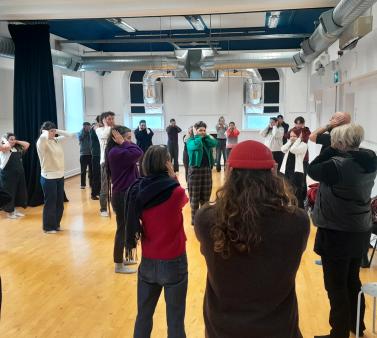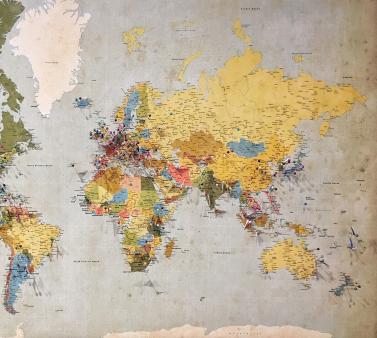What are collaborative workspaces?
Gerhard Krauss: Collaborative workspaces represent either coworking spaces or multi-purpose spaces that host, among other things, a coworking space. A coworking space is a flexible working space, which allows you to meet people. First, there was the term "third place", a more general term used in the 1990s by an American sociologist, Ray Oldenburg. The third place is a space between a first place (i.e. one’s house), and a second place (i.e. the walls of one’s company). This means that people are itinerant, that they use spaces in stations, airports, cafés... Third places will have a core group of users. On the local-scale, it is a place frequented by the same group of people, and it exists as a result of its many usages.
How did this notion of "third place" emerge?
G. K. There are antecedents to the third place: the Roman forum, for example. Writers used to meet in cafés, and professionals have often met over a meal to do business. Collaborative workspaces have existed in many forms, as have networks, but we were not examining these questions in the same way. Today, we are paying more attention to the third place, because it corresponds to the evolution of our contemporary society, which values both the creative work of individuals and their cooperation within networks, all of which is fostered through digital technologies. But the importance of networks in the economy has already been studied at the beginning of the last century by some of the founding fathers of sociology. For example, Max Weber studied Protestant sects in America and revealed the importance of these communities' networks in economic life. The third place is also based on the principle that we need each other to succeed in our professional field.
How do users of collaborative spaces interact with each other?
G. K. The question is whether the people who frequent these spaces will be encouraged to work together, to enter into tangible cooperation, or whether they will simply coexist. In these spaces, the career path of each person may be very different and, as such, there may be a limit to the possibilities for collaboration. We are dealing with professionals who show very individualistic behavior. They are often well integrated into their own network and do not necessarily need to benefit from the contacts and skills of others. In a coworking area where the composition of users is heterogeneous and the activities of each person is very specific, there are not always people with whom to develop new collaborations. Moreover, working in a network changes the dynamics between stakeholders as it relates to power. One’s network is not always easily shared, especially when it concerns their core business.
You are specifically interested in collaborative workspaces in peri-urban, even rural areas, in medium-sized towns and small municipalities.
G. K. Yes. Collaborative workspaces first emerged in large urban centers, such as San Francisco. What is new in this phenomenon is that it is now spreading everywhere. It has spread to small towns and rural areas. Our project is funded as part of a research axis that focuses on mobility and sustainable urban systems. We are interested in different themes to understand the role that these spaces play at the local and regional scales. In particular, they often attract a specific demographic. We take the geographical and social characteristics and trajectories of the users and founders into consideration, we question them on their professional projects, their mobility practices, their career prospects, their interaction with other users of the space, etc.
Have you been able to identify certain common characteristics of the users of these spaces?
G. K. It is a population that can be described as socially (but not necessarily economically) privileged because they are well educated and have the means to decide when, where, and how they work. The need to be mobile is not a deterring factor because it is something under their control. This culture of mobility is very different from that of the French gilets jaunes or “yellow vests”. The latter is a population historically established in the areas in which they reside, and whose way of life is being changed and challenged by taxes. They are being told that they will not be able to continue travelling as they have in the past, and that they will no longer be able to have one vehicle per person, etc. This population is reacting to these changes, defending itself, protesting.
The users of collaborative workspaces, on the other hand, are a minority of a very different population who are looking for a new way of life through their mastery of digital tools. They are often former urban dwellers, in their thirties, who studied, lived and worked in Paris, but who, at some point, grew tired of the big city, traffic jams and pollution. They have grown up hearing discourse around environmental degradation and catastrophe. They settle in an area with full knowledge of the facts. They are aware that there are fewer and fewer public services, and a dwindling number of local shops. Their mobility choices are part of a larger reflection and they are able to replace many of their physical movements with virtual mobility. This minority is at the heart of our project, and they will perhaps play a pivotal role in the development and practices of regions.




